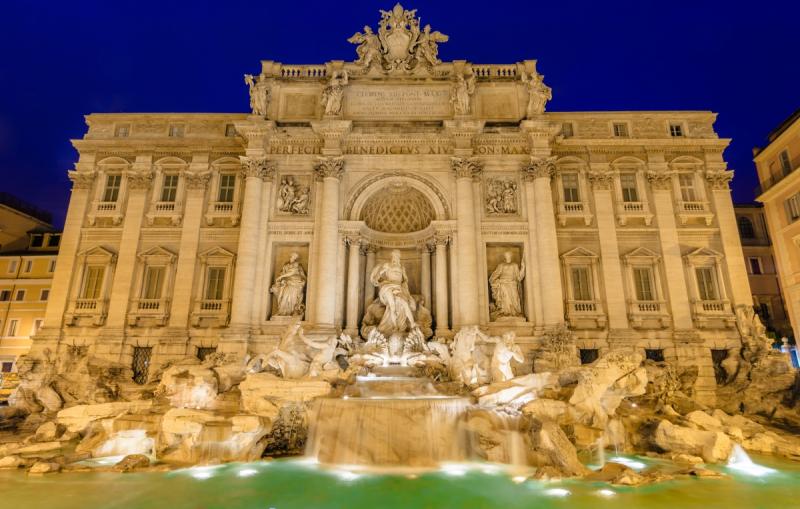
The Trevi Fountain: A History Unexplored
The Trevi Fountain in Rome is one of the most visited and popular of the ancient monuments in the incredibly rich tapestry of history that visitors find in Italy’s capital city. To throw a coin over your left shoulder into the fountain is to bring good luck and hopefully a return to the city, and more than €3000 are thrown in daily.
According to the 1954 Oscar-winning romantic drama Three Coins in the Fountain, whose title song was sung by an uncredited Frank Sinatra, throwing a second coin in the fountain means you will fall in love a Roman, and a third coin will ensure that the love will result in marriage. The coins thrown in are collected by Caritas Italia, a Roman Catholic charity, to fund a low-cost supermarket for the capital’s poor.
The fountain was under construction, beginning in 2013, and has recently re-opened after a $2.4 million renovation – in a collaboration with fashion house, Fendi – ensured the fountain will be around for centuries to come. Visitors to the city should make the most of the renewed public interest in keeping national monuments pristine, and take a stroll through the Trevi district to see the newly sparkling fountain. This is not the only monument gaining attention from Italy’s business community however. Alongside Fendi becoming involved in the Trevi Fountain, jeweller Bulgari are planning to aid in the renovations to the Spanish Steps, as well as shoe designer Tod’s, planning renovations to the infamous Coliseum.
With such a high profile, it’s surprising how little of the fountain’s history is widely known. Originally it was the site where a young maiden guided thirsty Roman soldiers to pure water in 19 BC. Pope Urban VIII decided to replace the statue commemorating the event with a more impressive monument. In 1629, celebrated architect Gian Lorenzo Bernini was asked to plan the design, but the project was abandoned in 1644 when Urban passed away, leaving papal debts of over 35,000,000 scudi (the precursor to the lira).
The project was left untouched until 1730, when Pope Clement XII tasked Florentine architect Alessandro Galilei with assuring its completion; however after protests from locals, the honour was given to Roman architect Nicola Salvi. Sadly, Salvi passed away in 1751 leaving only the foundations of the fountain completed. It wasn’t until 1761, when Salvi’s friend Pietro Bracci finished the work, taking inspiration from Bernini’s original sketches. The new renovation opened in November 2015, and has repaired the crumbling stonework, as well as protecting it from future cold spells (which are damaging for the fountain).
Share this article:




















